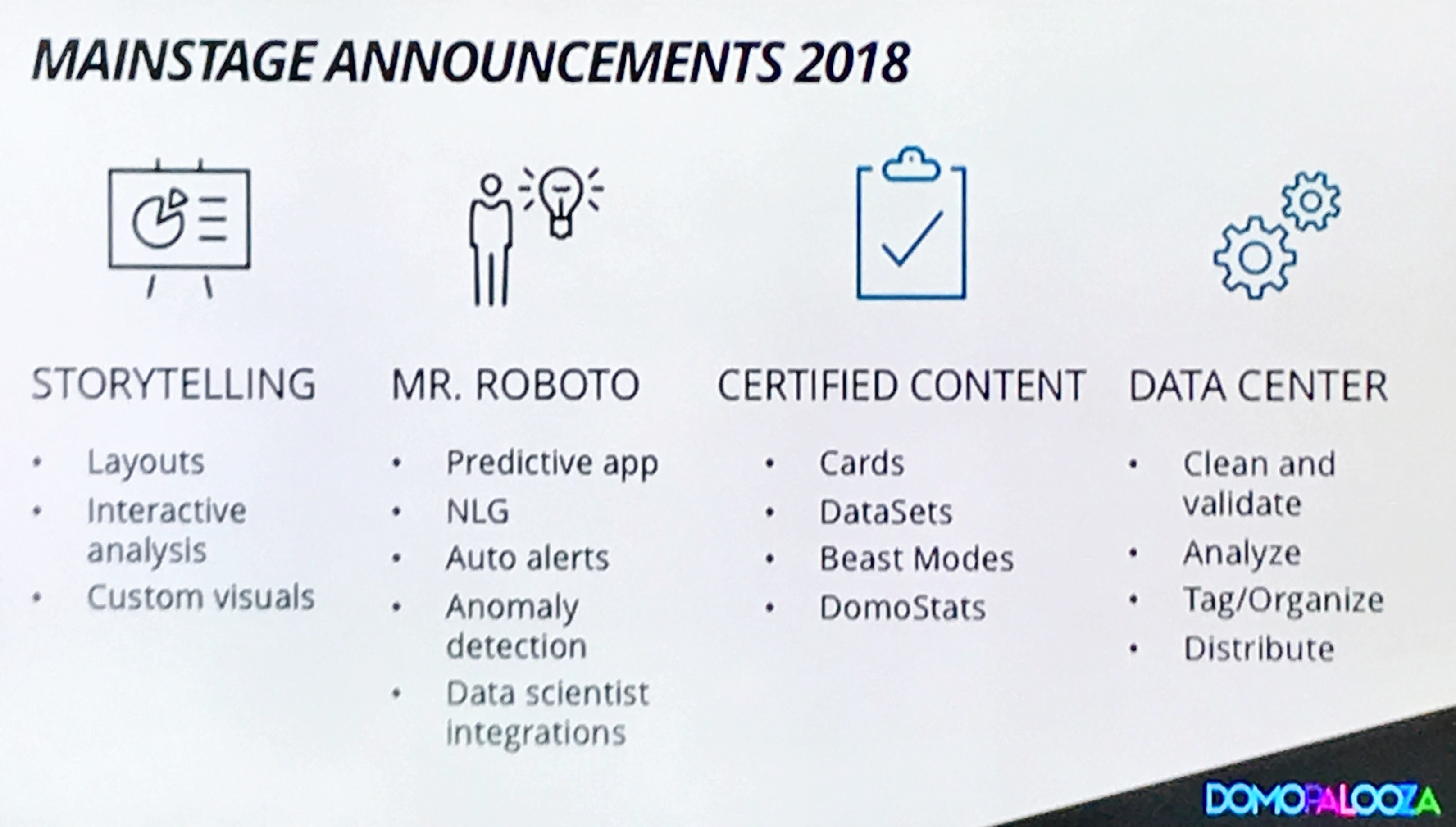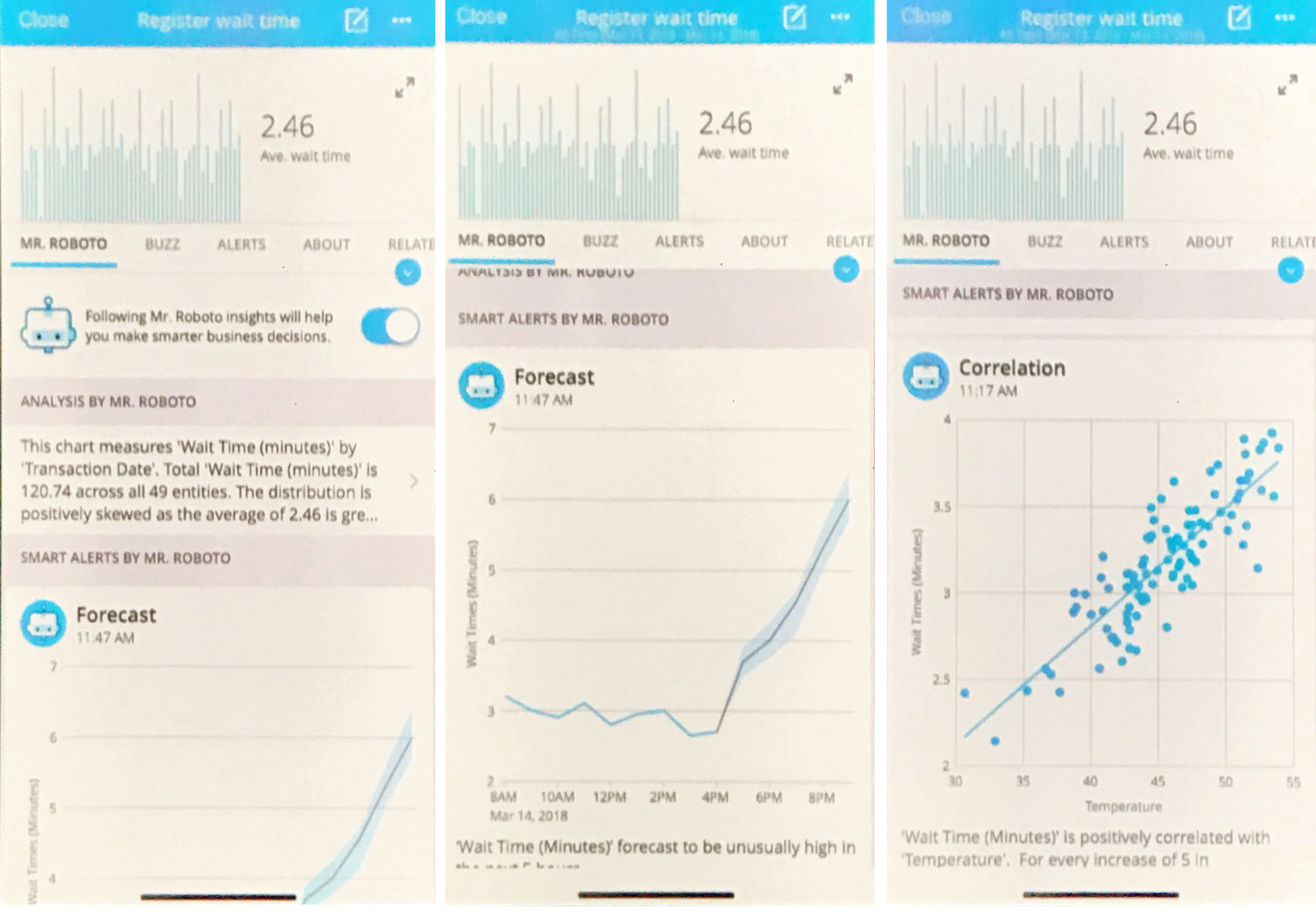Domo insists its platform is aimed at business people, not data analysts. Here’s the appeal to CXOs and line-of-business types.
The key message at Domopalooza 2018, March 13-15 in Salt Lake City, was that Domo is a platform for business, not a tool for techies. I’ve heard this platform messaging before, but it made sense for cloud-based analytics vendor Domo to emphasize its new “for the good of the company” slogan to try to set itself apart from competitors Tableau, Microsoft Power BI and Qlik.
“Domo is an operating system that lets you run your business on your phone,” declared Domo CEO and founder Josh James in his opening keynote.
It’s an apt description, though Domo is most often used to run the marketing and sales aspects of businesses. Once adopted, Domo usage tends to expand and, in some cases, go companywide. Customers I spoke to at Domopalooza were extending their deployments into finance, customer support, supply chain management and other operational areas. Broad use is most common among corporate customers (meaning those with less than $1 billion in annual revenue), but enterprise customers including Target, United Health Group, Telus and L’oreal are expanding their Domo footprints.
These announcements from Domopalooza 2018 will see beta release in spring and
general availability this summer.
To recap some basics (from my Domopalooza 2017 analysis), Domo is a cloud-based, multi-tenant platform onto which you can load diverse data at scale. There are more than 500 connectors to common data sources, and Domo’s Magic ETL supports integration and transformation. Domo’s Vault back end and infrastructure runs primarily on Amazon Web Services, but it’s also available on Azure for customers (such as Target) that aren’t comfortable storing data on AWS.
Domo introduced a Bring Your Own Key encryption option last year. That won over many customers with demanding security requirements. The company is also rolling out a federated data-access option for those who want to retain certain data on-premises without loading it or copying it into the cloud. Performance with this remote-query option depends on the bandwidth and latency of the customer’s data-center connections and query engine.
Once data is loaded into Domo, admins expose data sets with appropriate access privileges. Business intelligence/data analyst types tend to build out the initial cards and pages (akin to data visualizations and dashboards), but it’s common for business types to create and edit their own cards. Once users learn the platform, departmental and line-of-business power users often develop cards, pages and even “Beast Mode” custom calculations. There are hundreds of prebuilt and templated cards and pages available.
Domo execs say it’s not uncommon for CXOs to be big Domo users. Jeremy Andrus, CEO at Traeger Grills and a keynote guest, said he’s the number-one user at his company, which is a $450-million maker of barbeque grills. Andrus said he looks at insights on revenue, day sales, margins, channel productivity and marketing efficiency on a daily basis, usually from his phone. At larger companies the buyers and biggest users are typically line-of-business leaders. A keynote panel of media customers brought together marketing, advertising and operations vice presidents from Domo customers ESPN, The New York Times, Univision and The Washington Post.
Upgrades Announced at Domopalooza
The major announcements at Domopalooza fell into four categories: storytelling, Mr. Roboto, certified content and data center. Most of these upgrades are expected to see beta release in this spring with general availability expected by summer. Here’s a quick summary of what’s in store:
Storytelling: Hightlights include auto-suggested page layouts, more templated page layouts, custom charting capabilities, and support for guided, interactive analyses.
Mr. Roboto: This is Domo’s intelligence, alerting and machine learning layer. Upgrades here include natural-language generation, automated predictions, forecast alerts, and anomaly and correlation detection in third-party data. Also planned are R- and Python-based data science integration.
Mobile views of coming Mr. Roboto capabilities including, left to right, natural language
generation, forecasting and correlation.
Certified content: Coming certification capabilities for cards, data sets and Beast Mode custom calculations will beef up governance and compliance capabilities with granular controls. This will help analysts and administrators ensure sound data and sound, sanctioned analyses, but it’s not a one-way street. Business users will be able to submit the new cards they develop for certification. Beefed up statistics for admins will reveal who’s using what data, cards and Beast Modes and whether there are overlaps, redundancies or inconsistencies.
Data center: These upgrades will help admin and data-management types with data cleansing and validation. Here, too, beefed statistics will help admins understand and tag data and then track usage. Collaboration and group controls will help with managing data sets at scale.
MyPOV on Domopalooza 2018 and Domo’s Direction
I assumed Domopalooza’s move from The Great American Hotel in 2017 to the far larger Salt Palace Convention Center for 2018 would mean a much bigger event, but attendance was roughly the same as last year at around 3,000 people. The extra space made things more commodious and comfortable, but last year’s event seemed to have a bit more energy.
As for the keynotes, Domo leaned heavily on fireside chats with celebrity guests. I prefer hearing from customers, particularly innovators. On that note, Simone Knight, VP, Marketing Strategy and Media Intelligence at Univision, was fantastic both as a guest and in leading the media panel. Ben Schein, Senior Director, Enterprise Data, Analytics and BI at Target, made a reprise appearance, updating the details of the retailer’s massive Domo footprint. Target now has 800 billion (with a B) rows of data in Domo, and demand now averages 3,000 weekly users, up from 1,500 weekly users last year.
As for the announcements, every customer I talked was eager to adopt the new features. The certifications, storytelling and data admin upgrades were described as must haves that can’t come soon enough. The Mr. Roboto capabilities are nice-to-haves that will drive innovation. If you read my January report on “How Machine Learning and Artificial Intelligence will Change BI and Analytics,” you know that Domo is among the leading vendors I detailed that are investing in ML and AI. I like the platform approach of Mr. Roboto, which will enable customers and partners to work with APIs and add their own code and customized capabilities.
Domo creates early anticipation for features by holding a “Sneak Peek” and customer-wish-list session at the end of every Domopalooza. The upside is that Domo’s direction is very customer driven. The downside is that it might be 14 to 18 months between initial public discussions about features and upgrades and general availability. That can make the process seem slow when, in fact, it’s just more open. Companies that are more secretive about their development work for many months before announcing new features run the risk of getting too little input and facing surprises in the beta and release stages.
Domo is still maturing. It started as a platform designed to run in the cloud and give business users web and mobile access to insights. The market messaging is now in line with that original vision and it’s building out the deeper levels of management control and customization capabilities that the developers and administrators are demanding as deployments scale up and out.
Related Reading:
MicroStrategy Makes Case for Agile Analytics on its Enterprise Platform
Tableau Conference 2017: What’s New, What’s Coming, What’s Missing
Qlik Plots Course to Big Data, Cloud and ‘AI’ Innovation




